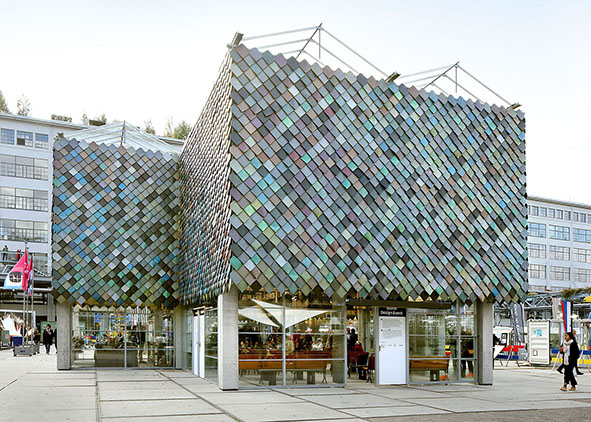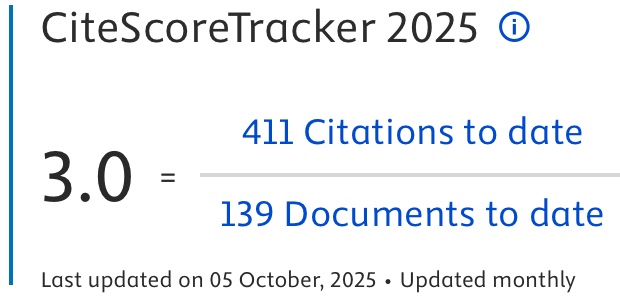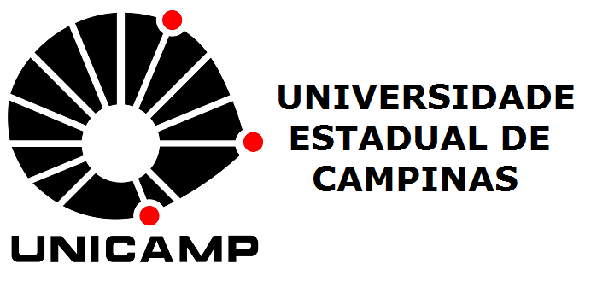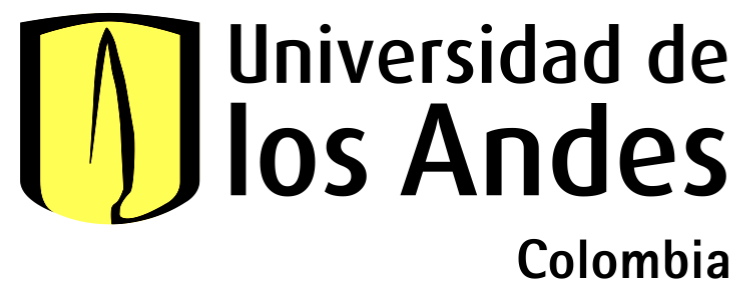La decarbonizzazione degli edifici sarà sufficiente? Limitare e ridistribuire l’aumento di superficie costruita
DOI:
https://doi.org/10.19229/2464-9309/1562024Parole chiave:
emergenza climatica, sufficienza, sovraconsumo di risorse, disuguaglianza, innovabilityAbstract
Se per fronteggiare il cambiamento climatico la decarbonizzazione dell’ambiente costruito è indicata come la principale strategia attraverso energie rinnovabili ed efficienza energetica, tuttavia essa non prende in esame il ruolo svolto dall’aumento di superficie costruita e il relativo consumo indiscriminato di materiali e risorse naturali che invece, spostando il quadro di riferimento, dovrebbero essere considerati come la causa principale non solo dei cambiamenti climatici, ma anche della perdita di biodiversità e dell’aumento delle disuguaglianze nel mondo. Il recente riconoscimento dell’importanza del carbonio incorporato ha portato una maggiore attenzione a un diverso approccio finalizzato a ridurre e ridistribuire l’aumento di superficie costruita, basandosi su dati statistici relativi al carbonio, alla superficie edificata e alle diverse tipologie edilizie. Prendendo in esame gli scenari di crescita e utilizzando un approccio creativo sistemico e il concetto di ‘innovability’, il saggio introduce il ruolo della ‘sufficienza’ per ridurre il consumo di nuovo suolo e per rispondere alle esigenze dei nuovi servizi resi possibili dalla digitalizzazione. Se da un lato questo cambiamento trasformativo può ridurre drasticamente le emissioni di carbonio, la perdita di biodiversità e le disuguaglianze, dall’altro pone sfide e opportunità importanti per architetti, progettisti e altri operatori del settore.
Info sull'articolo
Ricevuto: 31/01/2024; Revisionato: 18/03/2024; Accettato: 13/04/2024
Downloads
##plugins.generic.articleMetricsGraph.articlePageHeading##
Riferimenti bibliografici
Ackoff, R. L. (2004), “Transforming the systems movement”, in The Systems Thinker, vol. 15, issue 8, pp. 2-5. [Online] Available at: thesystemsthinker.com/wp-content/uploads/pdfs/150801pk.pdf [Accessed 14 January 2024].
Alcaraz, O., Buenestado, P., Escribano, B., Sureda, B., Turon, A. and Xercavins, J. (2018), “Distributing the global climate budget with climate justice criteria”, in Climate Change, vol. 149, pp. 131-145. [Online] Available at: doi.org/10.1007/s10584-018-2224-0 [Accessed 14 January 2024].
Architecture 2030 (2021), “Why the built environment?”, in Architecture 2030, 06/10/2021. [Online] Available at: architecture2030.org/why-the-built-environment/ [Accessed 14 January 2024].
Arehart, J. H., Pomponi, F., D’Amico, B. and W. V., Srubar III (2021), “A new estimate of building floor space in North America”, in Environmental Science and Technology, vol. 55, issue 8, pp. 5161-5170. [Online] Available at: doi.org/10.1021/acs.est.0c05081 [Accessed 14 January 2024].
Arup and EMF – Ellen MacArthur Foundation (n.d.), Circular building design toolkit. [Online] Available at: ce-toolkit.dhub.arup.com/strategies [Accessed 14 January 2024].
Barber, D. A. (2023), “Solar architecture and the sufficiency imperative”, in Renewable and Sustainable Energy Transition, vol. 4, pp. 1-3. [Online] Available at: doi.org/10.1016/j.rset.2023.100066 [Accessed 14 January 2024].
Boehm, S., Jeffrey, L., Hecke, J., Schumer, C., Jaeger, J., Fyson, C., Levin, K., Nilsson, A., Naimoli, S., Daly, E., Thwaites, J., Lebling, K., Waite, R., Collis, J., Sims, M., Singh, N., Grier, E., Lamb, W., Castellanos, S., Lee, A., Geffray, M.-C., Santo, R., Balehegn, M., Petroni, M. and Masterson, M. (2023), State of Climate Action 2023, Systems Change Lab, Berlin and Cologne, Germany. [Online] Available at: doi.org/10.46830/wrirpt.23.00010 [Accessed 14 January 2024].
C40 Cities (2018), Consumption-based GHG emissions of C40 cities, Climate Leadership Group, C40 Cities for Climate Change, March. [Online] Available at: cdn.locomotive.works/sites/5ab410c8a2f42204838f797e/content_entry 5ab410fb74c4833febe6c81a/5ad4c0c274c4837def5d3b91/files/C40_GHGE-Report_040518.pdf?1540555698 [Accessed 14 January 2024].
Caffo, L. (2023), “A talk with Leonardo Caffo”, in Lunatum Magazine, 10/02/2023. [Online] Available at: lunatummag.com/article/lunatumtalks-with-leonardo-caffo [Accessed 14 January 2024].
Circle Economy Foundation (2024), The Circular Economy Gap Report 2024. [Online] Available at: circularity-gap.world/2024 [Accessed 26 January 2024].
CRREM – Carbon Risk Real Estate Monitor (2023), From global emission budgets to decarbonisation pathways at property level. [Online] Available at: crrem.eu/wp-content/uploads/2023/01/CRREM-downscaling-documentation-and-assessment-methodology_Update-V2_V1.0-11-01-23.pdf [Accessed 14 January 2024].
Deetman, S., Marinova, S., van der Voet, E., van Vuuren, D., Edelenbosch, O. and Heijungs, R. (2020), “Modelling global material stocks and flows for residential and service sector buildings towards 2050”, in Journal of Cleaner Production, vol. 245, article 118658, pp. 1-11. [Online] Available at: doi.org/10.1016/j.jclepro.2019.118658 [Accessed 14 January 2024].
EEB – European Environmental Bureau (2020), A circular economy within ecological limits – Why we need to set targets to reduce EU resource consumption and waste generation in the new Circular Economy Action Plan. [Online] Available at: eeb.org/library/a-circular-economy-within-ecological-limits/ [Accessed 12 January 2024].
EFFEKT, MOE and CEBRA (2022), The Reduction Roadmap, Denmark, Copenhagen, September. [Online] Available at: reductionroadmap.dk/reduction-roadmap [Accessed 24 January 2024].
European Commission (2023), “New European Bauhaus Academy to build skills for sustainable construction with innovative materials”, in ec.europa.eu, 18/12/2023. [Online] Available at: ec.europa.eu/commission/presscorner/detail/en/ip_23_6593 [Accessed 14 January 2024].
European Commission (2021), New European Bauhaus – Shaping more beautiful, sustainable and inclusive forms of living together. [Online] Available at: europa.eu/new-european-bauhaus/index_en [Accessed 14 January 2024].
Falk, J., Gaffney, O., Bhowmik, A. K., Bergmark, P., Galaz, V., Gaskell, N., Henningsson, S., Höjer, M., Jacobson, L., Jónás, K., Kåberger, T., Klingenfeld, D., Lenhart, J., Loken, B., Lundén, D., Malmodin, J., Malmqvist, T., Olausson, V., Otto, I., Pearce, A., Pihl, E. and Shalit, T. (2020), Exponential roadmap – Scaling 36 solutions to halve emission by 2030, version 1.5, Future Health, Sweden. [Online] Available at: exponentialroadmap.org/wp-content/uploads/2020/03/ExponentialRoadmap_1.5.1_216x279_08_AW _Download_Singles_Small.pdf [Accessed 29 January 2024].
Floridi, L. (2020), “The green and the blue – A new political ontology for a mature information society”, in ssrn.com, 30/04/2021. [Online] Available at: dx.doi.org/10.2139/ssrn.3831094 [Accessed 29 January 2024].
Friends of the Earth Europe (2022), “The time is ripe for resource use reduction targets”, in friendsoftheearth.eu, 26/10/2022. [Online] Available at: friendsoftheearth.eu/news/the-time-is-ripe-for-resource-use-reduction-targets/ [Accessed 27 January 2024].
GBCA – Green Building Council of Australia and thinkstep-anz (2021), Embodied carbon and embodied energy in Australia’s buildings. [Online] Available at: thinkstep-anz.com/assets/Whitepapers-Reports/Embodied-Carbon-Embodied-Energy-in-Australias-Buildings-2021-07-22-FINAL-PUBLIC.pdf [Accessed 14 January 2024].
Georgescu-Roegen, N. (1973), “The entropy law and the economic problem”, in Daly, H. E. (ed.), Toward a steady-state economy, W. H. Freeman & Co., pp. 37-49. [Online] Available at: are.na/block/7305017 [Accessed 14 January 2024].
Haberl, H., Löw, M., Perez-Laborda, A., Matej, S., Plank, B., Wiedenhofer, D., Creutzig, F., Erb, K.-H. and Duro, J. A. (2023), “Built structures influence patterns of energy demand and CO2 emissions across countries”, in Nature Communications, vol. 14, article 3898, pp. 1-10. [Online] Available at: doi.org/10.1038/s41467-023-39728-3 [Accessed 14 January 2024].
Habert, G., Röck, M., Steininger, K., Lupisek, A., Birgisdottir, H., Design, H., Chandrakumar, C., Pittau, F., Passer, A., Rovers, R., Slavkovic, K., Hollberg, A., Hoxha, E., Jusselme, T., Nault, E., Allacker, K. and Lützkendorf, T. (2020), “Carbon budgets for buildings – Harmonising temporal, spatial and sectoral dimensions”, in Buildings & Cities, vol. 1, issue 1, pp. 429-452. [Online] Available at: doi.org/10.5334/bc.47 [Accessed 14 January 2024].
Haigh, L. (2023), “Beyond the energy transition”, in Economist Impact, 31/07/2023. [Online] Available at: impact.economist.com/sustainability/circular-economies/beyond-the-energy-transition-why-we-need-a-circular-economy-to-keep-human [Accessed 14 January 2024].
Hickel, J., O’Neill, D. W., Fanning, A. L. and Zoomkawala, H. (2022), “National responsibility for ecological breakdown – A fair-shares assessment of resource use – 1970-2017”, in The Lancet | Planet Health, vol. 6, issue 4, pp. e342-e349. [Online] Available at: doi.org/10.1016/S2542-5196(22)00044-4 [Accessed 14 January 2024].
Himes, A. (2021), “Talk by A. Himes to TedX Seattle”, in carbonleadershipforum.org. [Online] Available at: carbonleadershipforum.org/tedx-himes-climate-change [Accessed 14 January 2024].
Horup, L. H., Steinmann, J., Le Den, X., Röck, M., Sørensen, A., Tozan, B. and Birgisdottir, H. (2022), Towards EU embodied carbon benchmarks for buildings – # 3 Defining budget-based targets – A top-down approach. [Online] Available at: doi.org/10.5281/zenodo.6120882 [Accessed 14 January 2024].
Hoxha, E., Röck, M., Truger, B., Steininger, K. and Passer, A. (2020), “Austrian GHG emission targets for new buildings and major renovations – An exploratory study”, in IOP Conf Series | Earth and Environmental Science, vol. 588, pp. 1-8. [Online] Available at: doi.org/10.1088/1755-1315/588/3/032052 [Accessed 14 January 2024].
Hurst, W. (2023), “Get up to speed on embodied carbon now, say leading developers”, in Architects’ Journal, 25/05/2023. [Online] Available at: architectsjournal.co.uk/news/get-up-to-speed-on-embodied-carbon-now-say-leading-developers [Accessed 14 January 2024].
IEA – International Energy Agency (2023), Breakthrough Agenda Report 2023 – Buildings. [Online] Available at: iea.org/reports/breakthrough-agenda-report-2023/buildings [Accessed 14 January 2024].
IEA – International Energy Agency (2021), Net Zero by 2050 – A roadmap for the global energy sector. [Online] Available at: iea.org/reports/net-zero-by-2050 [Accessed 14 January 2024].
IPCC – Intergovernmental Panel on Climate Change (2023), Climate Change 2023 – Synthesis Report – Summary for Policymaker. [Online] Available at: ipcc.ch/report/ar6/syr/downloads/report/IPCC_AR6_SYR_SPM.pdf [Accessed 14 January 2024].
IPCC – Intergovernmental Panel on Climate Change (2022), Climate Change 2022 – Mitigation of climate change, Working Group III 6th Assessment Report. [Online] Available at: ipcc.ch/report/ar6/wg3/ [Accessed 14 January 2024].
Irwin, T. (2018), “The Emerging Transition Design Approach”, in Storni, C., Leahy, K., McMahon, M., Lloyd, P. and Bohemia, E. (eds), Design as a catalyst for change | DRS International Conference 2018, 25-28 June, Limerick, Ireland, pp. 968-989. [Online] Available at: doi.org/10.21606/drs.2018.210 [Accessed 30 January 2024].
Jackson, M. C. (2006), “Creative holism – A critical systems approach to complex problem situations”, in Systems, Research and Behavioural Science, vol. 23, issue 5, pp. 647-657. [Online] Available at: doi.org/10.1002/sres.799 [Accessed 14 January 2024].
Kitzes, J., Wackernagel, M., Loh, J., Peller, A., Goldfinger, S., Cheng, D. and Tea, K. (2008), “Shrink and Share – Humanity’s Present and Future Ecological Footprint”, in Philosophical Transactions of the Royal Society B, vol. 363, issue 1491, pp. 467-475. [Online] Available at: doi.org/10.1098/rstb.2007.2164 [Accessed 14 January 2024].
Krausmann, F., Wiedenhofer, D. and Haberl, H. (2020), “Growing stocks of buildings, infrastructures and machinery as key challenge for compliance with climate targets”, in Global Environmental Change, vol. 61, article 102034, pp. 1-10. [Online] Available at: doi.org/10.1016/j.gloenvcha.2020.102034 [Accessed 14 January 2024].
Le Den, X., Caspani, M., Steinmann, J., Ryberg, M. and Lauridsen, K. (2023), A 1.5 °C pathway for the global building sector’s embodied emissions – Pathway Development Description – Draft, Science Based Targets. [Online] Available at: sciencebasedtargets.org/resources/files/DRAFT_SBTi_Embodied-carbon-pathway-development-description.pdf [Accessed 14 January 2024].
LETI – London Energy Transformation Initiative (2020), LETI Embodied Carbon Primer – Supplementary guidance to the Climate Emergency Design Guide. [Online] Available at: leti.uk/_files/ugd/252d09_8ceffcbcafdb43cf8a19ab9af5073b92.pdf [Accessed 14 January 2024].
négaWatt Association (2023), Energy sufficiency – Towards a more sustainable and fair society. [Online] Available at: negawatt.org/IMG/pdf/181029_energy-sufficiency_negawatt-scenario_eng.pdf [Accessed 14 January 2024].
Ness, D. A. (2023), “Technological efficiency limitations to climate mitigation – Why sufficiency is necessary”, in Buildings & Cities, vol. 4, issue 1, pp. 139-157. [Online] Available at: doi.org/10.5334/bc.297 [Accessed 14 January 2024].
Ness, D. (2022a), “Towards sufficiency and solidarity – COP27 implications for construction and property”, in Buildings & Cities, vol. 3, issue 1, pp. 912-919. [Online] Available at: doi.org/10.5334/bc.268 [Accessed 14 January 2024].
Ness, D. (2022b), “Beyond circularity – Do we need to shrink and share”, in Pál, V. (ed.), Social and Cultural Aspects of the Circular Economy, Routledge, pp. 194-203. [Online] Available at: doi.org/10.4324/9781003255246-12 [Accessed 14 January 2024].
Ness, D. (2021a), “Dalla nuova edilizia alla rigenerazione – Può il Nuovo Bauhaus ridefinire l’architettura e dare risposte ai cambiamenti globali? | The shift from new build to regeneration – Can the New Bauhaus transform architecture and design to meet global challenges?”, in Agathón | International journal of Architecture, Art and Design, vol. 9, pp. 22-31. [Online] Available at: doi.org/10.19229/2464-9309/922021 [Accessed 16 January 2024].
Ness, D. (2021b), The impact of overbuilding on people and the planet, Cambridge Scholars Publishing, Nottingham. [Online] Available at: cambridgescholars.com/product/978-1-5275-2402-6 [Accessed 14 January 2024].
Ness, D. and Xing, K. (2023), “Embodied carbon – The elephant in the urban growth room”, in The Fifth Estate, 28/11/2023. [Online] Available at: thefifthestate.com.au/urbanism/embodied-carbon-the-elephant-in-the-urban-growth-room/ [Accessed 14 January 2024].
O’Neill, D. W., Fanning, A. L., Lamb, W. F. and Steinberger, J. K. (2018), “A good life for all within planetary boundaries”, in Nature Sustainability, vol. 1, pp. 88-95. [Online] Available at: doi.org/10.1038/s41893-018-0021-4 [Accessed 14 January 2024].
Oxfam (2023), Climate Equality – A planet for the 99%. [Online] Available at: policy-practice.oxfam.org/resources/climate-equality-a-planet-for-the-99-621551/ [Accessed 24 January 2024].
Oxford Economics (2021), Future of Construction – A global forecast for construction to 2030, September. [Online] Available at: oxfordeconomics.com/wp-content/uploads/2023/08/Future-of-Construction-Full-Report.pdf [Accessed 14 January 2024].
Rockström, J., Gupta, J., Qin, D., Lade, S., Abrams, J., Andersen, L. et alii (2023), “Safe and just Earth system boundaries”, in Nature, vol. 619, article 7968, pp. 102-111. [Online] Available at: doi.org/10.1038/s41586-023-06083-8 [Accessed 14 January 2024].
Saheb, Y. (2021), Sufficiency and Circularity – The two overlooked decarbonisation strategies in the ‘Fit for 55’ Package, European Environmental Bureau – EEB. [Online] Available at: eeb.org/library/sufficiency-and-circularity-the-two-overlooked-decarbonisation-strategies-in-the-fit-for-55-package/ [Accessed 14 January 2024].
Schmidt-Bleek, F. B. (1993), The Fossil Makers, Birkhäuser.
Sciences Po (2023), Designing an outline for a new climate mitigation modelling framework, Hybrid Workshop, 22/11/2023, Sciences Po, Paris. [Online] Available at: sciencespo.fr/psia/chair-sustainable-development/2023/11/22/workshop-designing-an-outline-for-a-new-climate-mitigation-modelling-framework/ [Accessed 26 January 2024].
Stahel, W. R. (2008), “Global climate change in the wider context of sustainability”, in The Geneva Papers on Risk and Insurance – Issues and Practice, vol. 33, pp. 507-529. [Online] Available at: doi.org/10.1057/gpp.2008.21 [Accessed 14 January 2024].
Steffen, W., Broadgate, W., Deutsch, L., Gaffney, O. and Ludwig, C. (2015), “The trajectory of the Anthropocene – The great acceleration”, in The Anthropocene Review, vol. 2, issue 1, pp. 81-98. [Online] Available at: doi.org/10.1177/2053019614564785 [Accessed 14 January 2024].
Sugiyama, M., Wilson, C., Wiedenhofer, D., Benigna Boza-Kiss, B., Cao, T., Chatterjee, J. S., Chatterjee, S., Hara, T., Hayashi, A., Ju, Y., Krey, V., León, M. F., Martinez, L., Masanet, E., Mastrucci, A., Min, J., Niamir, L., Pelz, S., Roy, J., Saheb, Y., Schaeffer, R., Ürge-Vorsatz, D., van Ruijven, B., Shimoda, Y., Verdolini, E., Wiese, F., Yamaguchi, Y., Zell-Ziegler, C. and Zimm, C. (2023), “High with low – Harnessing the power of demand-side solutions for high wellbeing with low energy and material demand”, in Joule, vol. 8, issue 1, pp. 1-6. [Online] Available at: doi.org/10.1016/j.joule.2023.12.014 [Accessed 24 January 2024].
UN DESA (2018), The world’s cities in 2018. [Online] Available at: un.org/en/development/desa/population/publications/pdf/urbanization/the_ worlds_cities_in_2018_data_booklet.pdf [Accessed 28 January 2024].
UNDP – United Nations Development Programme (1992), Human Development Report 1992. [Online] Available at: hdr.undp.org/content/human-development-report-1992 [Accessed 14 January 2024].
UNEP – United Nations Environment Programme (2024), Global resources outlook 2024 – Bend the trend – Pathways to a liveable planet as resource use spikes, International Resource Panel, Nairobi. [Online] Available at: unep.org/resources/Global-Resource-Outlook-2024 [Accessed 30 March 2024].
UNEP – United Nations Environment Programme (2022), 2022 Global status report for buildings and construction – Towards a zero-emission, efficient and resilient buildings and construction sector, UN Environment Programme. [Online] Available at: wedocs.unep.org/handle/20.500.11822/41133 [Accessed 14 January 2024].
UNEP – United Nations Environment Programme (2020), Emissions Gap Report. [Online] Available at: unep.org/emissions-gap-report-2020 [Accessed 14 January 2024].
USGBC – U.S. Green Building Council (2023), State of Decarbonisation – Progress in U.S. Commercial Buildings 2023. [Online] Available at: usgbc.org/resources/state-decarbonization-progress-us-commercial-buildings-2023 [Accessed 14 January 2024].
Wardman, K. (2011), “From mechanistic to social systemic thinking – A digest of a talk by Russell Ackoff”, in The Systems Thinker, vol. 22, issue 7, pp. 7-10. [Online] Available at: thesystemsthinker.com/wp-content/uploads/pdfs/220711pk.pdf [Accessed 14 January 2024].

##submission.downloads##
Pubblicato
Come citare
Fascicolo
Sezione
Categorie
Licenza
Copyright (c) 2024 David Ness

TQuesto lavoro è fornito con la licenza Creative Commons Attribuzione 4.0 Internazionale.
AGATHÓN è pubblicata sotto la licenza Creative Commons Attribution License 4.0 (CC-BY).
License scheme | Legal code
Questa licenza consente a chiunque di:
Condividere: riprodurre, distribuire, comunicare al pubblico, esporre in pubblico, rappresentare, eseguire e recitare questo materiale con qualsiasi mezzo e formato.
Modificare: remixare, trasformare il materiale e basarti su di esso per le tue opere per qualsiasi fine, anche commerciale.
Alle seguenti condizioni
Attribuzione: si deve riconoscere una menzione di paternità adeguata, fornire un link alla licenza e indicare se sono state effettuate delle modifiche; si può fare ciò in qualsiasi maniera ragionevole possibile, ma non con modalità tali da suggerire che il licenziante avalli l'utilizzatore o l'utilizzo del suo materiale.
Divieto di restrizioni aggiuntive: non si possono applicare termini legali o misure tecnologiche che impongano ad altri soggetti dei vincoli giuridici su quanto la licenza consente di fare.
Note
Non si è tenuti a rispettare i termini della licenza per quelle componenti del materiale che siano in pubblico dominio o nei casi in cui il nuovo utilizzo sia consentito da una eccezione o limitazione prevista dalla legge.
Non sono fornite garanzie. La licenza può non conferire tutte le autorizzazioni necessarie per l'utilizzo che ci si prefigge. Ad esempio, diritti di terzi come i diritti all'immagine, alla riservatezza e i diritti morali potrebbero restringere gli usi del materiale.


















































































